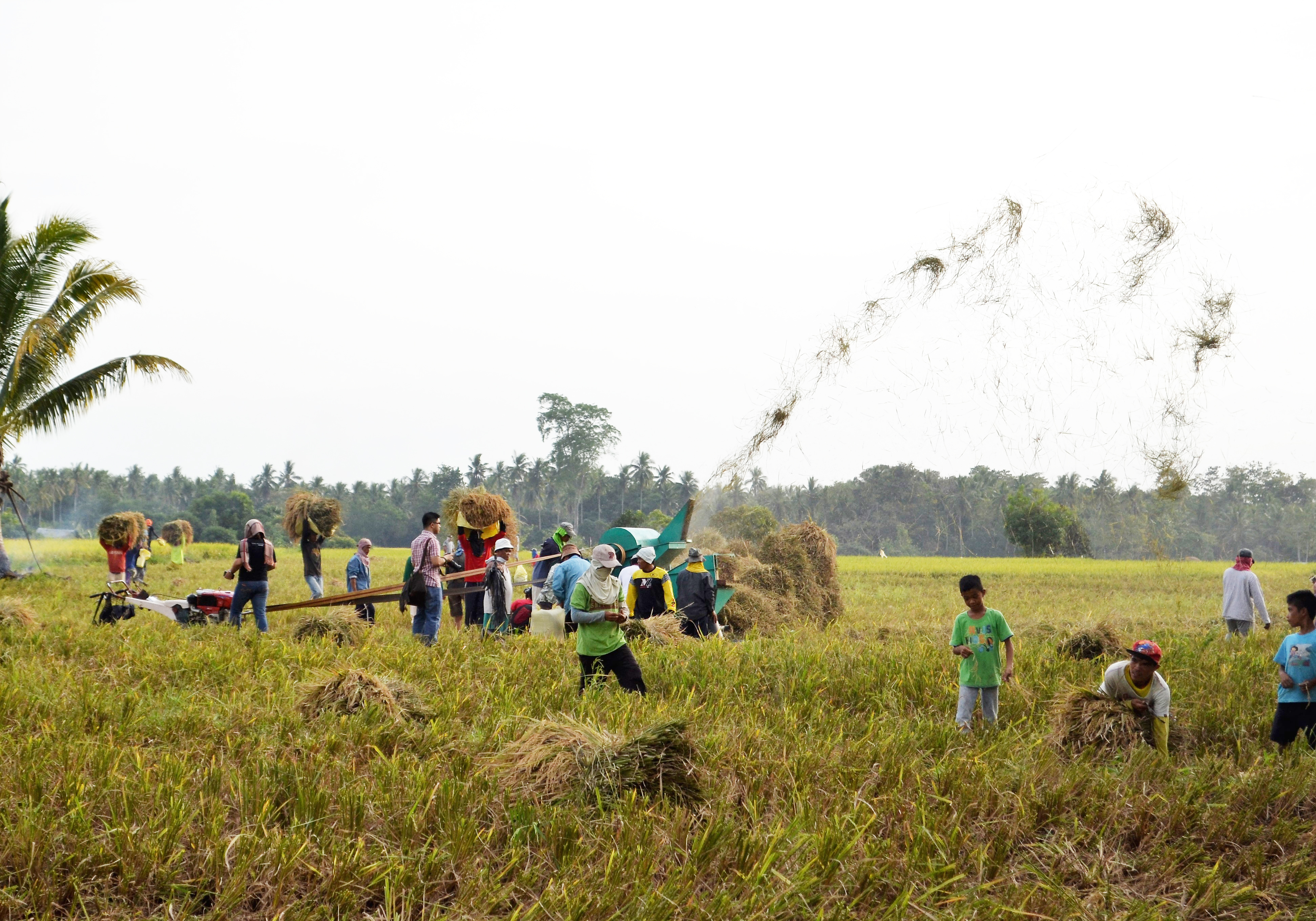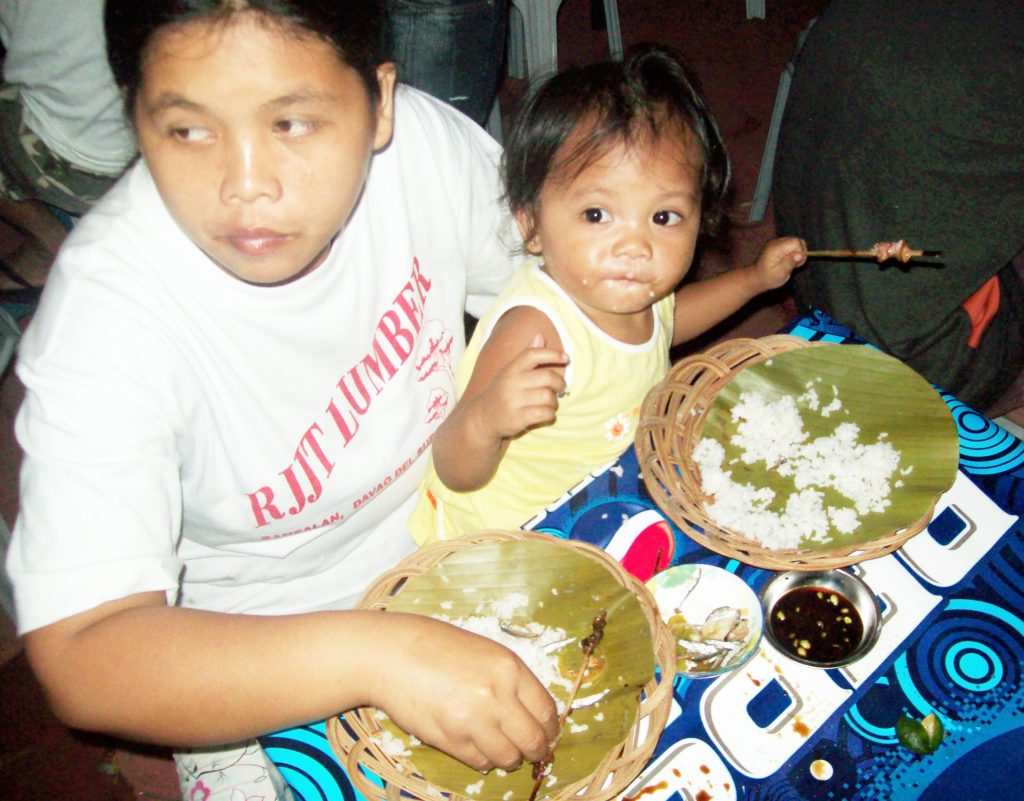
For thousands of years, rice has been part of the human diet. Historical evidence suggests that rice may have been produced and consumed up to 10,000 years ago.
“This, alongside its current global status as the world’s most important human food, makes rice production responsible for feeding more people over a longer period than any other crop,” the Laguna-based International Rice Research Institute (IRRI) said in a statement.
Rice is the leading source of sustenance for all Filipinos. In 2009, the country had an average annual rice consumption of 123 kilograms per person – among the highest in the world.
According to the Bureau of Agricultural Statistics, Filipinos spend more on rice than any other food. A survey conducted by the line agency of the Department of Agriculture showed that Filipinos, especially those from low-income households, are depending solely on rice more than ever for their daily dietary energy supply and dietary protein because it remains the most affordable food in the country.
Unknowingly, rice does not only help solve hunger but also “hidden hunger,” the colloquial term for micronutrient deficiency. It happens when people get enough macronutrients (such as carbohydrates, protein, and fat), but not enough micronutrients (vitamins and minerals) for optimum health.

In rice-consuming countries like the Philippines, lack of iron, zinc, and vitamin A are prevalent micronutrient deficiencies. “The cost of these deficiencies in terms of lives and quality of life lost is enormous, and women and children are most at risk,” the Rome-based UN Food and Agriculture (FAO) said in a report.
The FAO report considered the vitamin A status in the Philippines as “severe subclinical deficiency” which affected children 6 months – 5 years (8.2%) and pregnant women (7.1%). Iron deficiency anemia is the most alarming of the micronutrient deficiencies affecting a considerable proportion of infants (56.6%), pregnant women (50.7%), lactating women (45.7%) and male older persons (49.1%).
“While reports indicate that there are enough food to feed the country, many Filipinos continue to go hungry and become malnourished due to inadequate intake of food and nutrients,” FAO noticed in its report.
In its fight against hidden hunger, IRRI and its national counterpart, the Philippine Rice Research Institute (PhilRice), are collaborating to conduct more studies on golden rice, which has a potential way to reduce vitamin A deficiency.
Golden rice is a new type of rice that contains beta carotene, which is converted to vitamin A when eaten. Rigorous research has shown that just one cup of golden rice a day could be enough to provide an adult with half their daily needs of vitamin A.
“Golden rice field trials are part of our work to see if golden rice can be a safe and effective way to reduce vitamin A deficiency in the country – to reduce malnutrition,” said Dr. Bruce Tolentino, former deputy director general of communications and partnerships at IRRI. “Vitamin A deficiency is horrible and unnecessary, and we want to do our part to help to reduce it.”
Field trials of this kind of rice in the country have been permitted by the agriculture department, the national regulatory authority for crop biotechnology research and development after “establishing that the trials will pose no significant risks to human health and environment.”
Almost always, diabetics are advised to eat less rice. The reason: the starch-rich staple can potentially release high amounts of sugar into the blood when digested.
The Department of Health listed diabetes as the ninth leading cause of death among Filipinos today. The country is home to four million diabetics, with more than three million not knowing they have the disease.
But Filipino diabetics may now worry less. IRRI researchers have already identified the key gene that determines the glycemic index (GI) of rice. “The GI is a measure of how a carbohydrate like starch affects blood sugar (glucose) levels,” explains Dr. Rafael D. Guerrero, an academician of the National Academy of Science and Technology. “The higher the GI, the more glucose is released by food.”
The findings of a study, which analyzed 235 types of rice from around the world, is good news because it not only means rice can be part of a healthy diet for the average consumer. It also means people with diabetes, or at risk of diabetes, can select the right rice to help maintain a healthy, low-GI diet.
“It is an important achievement that offers rice breeders the opportunity to develop varieties with different GI levels to meet consumer needs,” IRRI said in a statement. “Future development of low-GI rice would also enable food manufacturers to develop new, low-GI food products based on rice.”
Dr. Melissa Fitzgerald, who led the research team at the IRRI, found the GI of rice varies a lot from one type of rice to another, ranging from a low of 48 to a high of 92, with an average of 64. “Low-GI foods are those measured 55 and less, medium-GI foods are those measured between 56 and 69, while high-GI foods measure 70 and above,” IRRI explained.
The rice with low GI is, indeed, good news for Filipinos. “Low-GI rice will have a particularly important role in the diets of people who derive the bulk of their calories from rice and who cannot afford to eat rice with other foods to help keep the GI of their diet low,” IRRI said. “Low-GI rice could help to keep diabetes at bay in these communities.”
While IRRI is still trying to find the type of rice that can help those with diabetes, eating brown rice may be the best solution. A Harvard University study found out that brown rice can lower the risk of developing diabetes. Researchers drew on data from over 200,000 subjects and found that those who ate five or more servings of white rice a week had a 17 percent increased risk of developing type 2 diabetes compared with those who rarely ate white rice. What’s more, they found that those who ate brown rice regularly were overall less likely to develop diabetes.
“When we refine rice, we strip away the majority of many of the nutrients,” says Dr. Walter Willet, a co-author on the study, “including magnesium, chromium and other minerals and vitamins. You’re left with a form of starch that is rapidly broken down, leads to greater spikes in blood sugar, and increases the demand for insulin. Over time this exhausts the pancreas and leads to diabetes.”
Another good news is that brown rice can also substantially reduce the risk of colon cancer, as it is a very good source of selenium, a trace mineral that induces DNA repair and synthesis in damaged cells and inhibits the proliferation of cancer cells. Selenium is an antioxidant and is essential for thyroid hormone metabolism and immune function.
Healthmad.com explains that “selenium plays a critical role in cancer prevention as a cofactor of glutathione peroxidase, which is one of the body’s most powerful antioxidant enzymes and is used in the liver to detoxify a wide range of potentially harmful molecules. When levels of glutathione peroxidase are too low, these toxic molecules wreak havoc on any cells with which they come in contact, damaging their cellular DNA and promoting the development of cancer cells.”
Brown rice help protect women from breast cancer. A cohort study conducted in United Kingdom hosted 35,972 women who were pre-menopausal. These women ate a diet rich in fiber and fruit. The fiber came from brown rice and other whole grains.
The pre-menopausal women that consumed the most fiber reduced their risk of breast cancer by about 52 percent compared to women who consumed a diet with the least fiber. Women who had high-fiber diets supplied mostly by whole grains had the most protection against breast cancer. (To be concluded)






